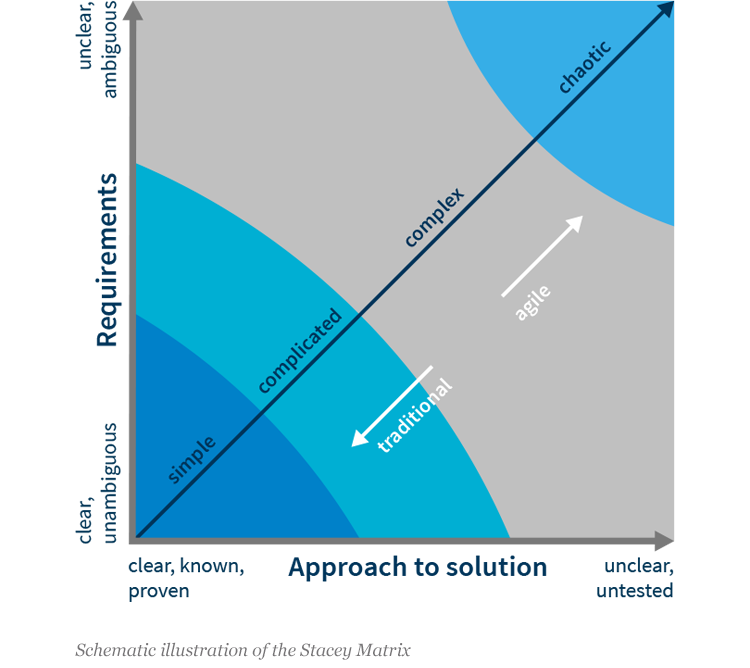Today I had a task to complete that I had long postponed due to other pressing matters. The team urged me to finally finish my part so that we could complete the implementation of a function in the software. The logic to be clarified was rather demanding and I struggled to get back into it. My to-do card on the task board was vague and my recollection of the initial meeting had already faded. So I started researching and found an email that refreshed my memory.
Overabundant communication channels lead to information loss
Oh, good old email. What a surprise, since I have much more modern communication tools at hand. Our team is spread all over Germany and we have been accustomed to working remotely, even before the corona pandemic. This works just fine for us, with the help of agile rituals such as the daily standup meeting and communication via video conferencing and chat. Successful communication is essential for the success of the project, as is well known.
It is also convenient that notes and documents can directly be shared within the online meeting. The catch is, however, that the chat often ends up containing decisions and technical information. Hence, the information I was looking for could just as well have been found there. Apart from email and chat, a surprising number of companies also have a third potential location for finding information: network drives, where project documents are stored in a more or less structured manner.
Communication in context means finding instead of searching
Have fun searching! Luckily, we at CONTACT have it much easier. We use our own software for project management, which provides us with excellent tools to do things better. In addition to the project management functionality, these include document management and a communication functionality called Activity Stream.
Posts in the Acitivity Stream – and this is the key point – can always be assigned to an object. For example, to a project, a task, or an open item. Or, in the case of our customers, to product data such as a CAD model, a bill of materials, or simulation data. This links project and product data to the relevant communication activities. For one thing, this allows us to search and find information in one single tool. In addition, because the object serves as an anchor point for the associated communication, all context-relevant information is automatically displayed when the object is called up.
Enrich objects with information en passant
Back to my case: To clean up the mess, I attached a document with my solution to the completed task. Along with it, I added the email that helped me do it. I also created and linked a new task for implementation by my colleagues, then wrote a summarizing Activity Stream post and shared it with them.
Now, I have brought together what belongs together. Even if a team member unfamiliar with the project history takes over the implementation, all information is immediately at hand. He or she can ask a question via the Activity Stream, without having to explain the context in an email or chat first. If I had used the Activity Stream to communicate within the task’s context from the beginning, all relevant information would have been assembled there. And I would have saved myself the trouble of researching and combining it.
Changing habits pays off
So, what do we learn from this? Firstly: A project management system with document management and context-related communication à la Activity Stream improves collaboration enormously. Secondly: It takes some discipline not to fall back to other tools at the first opportunity – as I did. But it saves a lot of work later on.
Time and time again, I see customers hesitating to switch from email to this type of contextual communication. My simple advice: Have the courage! Provide your employees with an appropriate tool and advocate for it. It may be unfamiliar at first, and it takes some time to gain widespread acceptance. But it is worth it. For the entire organization as well as the individual employee!




